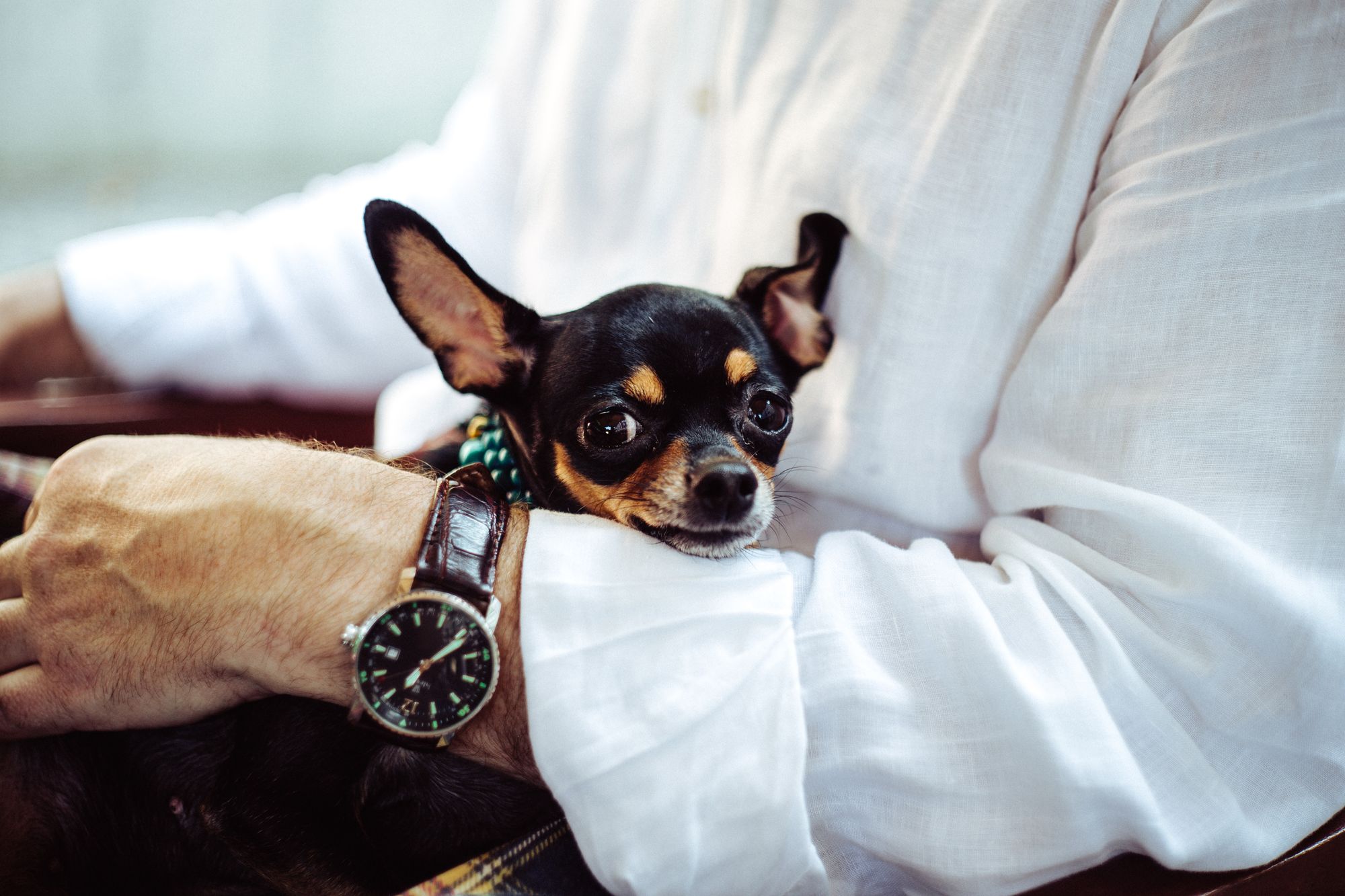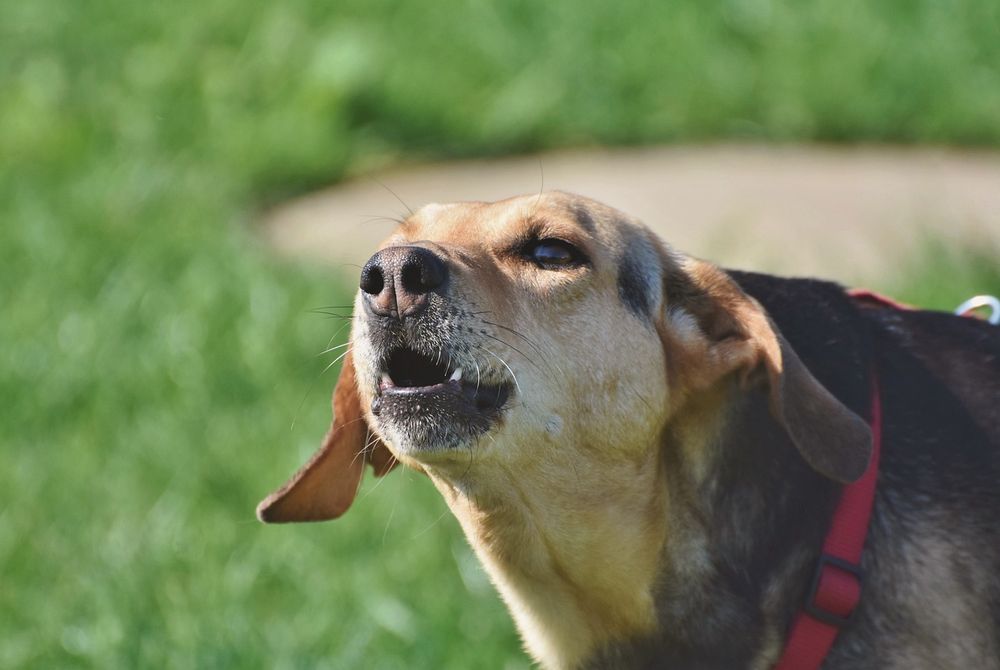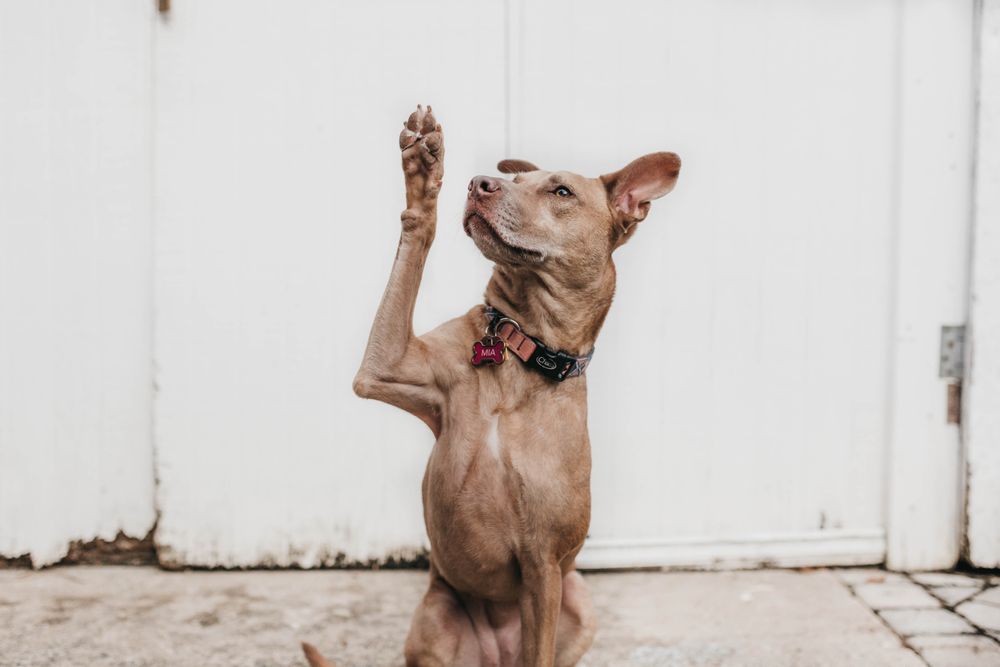Introducing your dog to new people is all about managing your dog’s emotional state, as well as the expectations of other people. A well managed introduction can make or break the relationship between your dog and new people, and this article will explain:
- Introducing your dog to your family
- Introducing your dog to your kids
- Introducing your dog to houseguests
- Frequently asked questions about introducing a dog to new people
Introducing your dog to your family
Bringing a new dog home is an exciting, and important, moment for your family. While everyone is excited, it’s your job to manage the situation and create a safe, and happy, environment for your family. To do this:
- Wait at least 72 hours before allowing anyone other than your family members into your home. If your dog is adopted, remember that they might need extra time to decompress and release the anxiety attached to shelter life
- Keep your dog separate from your other animals at first, and then introduce them slowly
- Prioritize exercise and mentally enriching activities such as puzzles, snuffle mats and work-to-eat toys
- Avoid overstimulation and try to keep everyone in your house as calm as possible when interacting with your dog
- Create a relaxing environment by playing soft music
If you have young children, the major items to think about are:
- Safety. It’s your responsibility to make sure everyone’s safe and comfortable.
- Your dog’s natural behavior. Dogs, especially puppies, will jump and bark and get rambunctious. This is natural.
With these things in mind, there are a few things you can do to control how your dog and child interact with one another:
1. Space management. You always want to make sure your pup has a “safe space” to retreat to. If your pup is crate trained, or knows their “Go to mat” cue, these are good options to help them feel more comfortable and able to have a break from kids. Teach your child not to go in this area. Additionally, there are times when you may want to create clear separation between your dog and child (e.g. your dog or child is very wound up). In these situations, use a baby gate to keep your dog and child separated from one another.
2. Learn your pup’s body language. Start to learn how your dog’s feeling by studying their body language. When they are getting stressed or overexcited, this will be your cue to separate your dog and child. Learning to spot the signs your dog is stressed, or over excited, will position you to be proactive before a situation happens. Key pieces of body language to focus on:
- Tail. A loose tail or propeller-like wag usually indicates your dog is feeling friendly. On the other hand, a stiff or high tail may indicate that your dog is on guard.
- Ears. Ears held in a natural position typically indicate that your dog is relaxed. On the other hand, ears that are held up and forward may indicate a willingness to fight or general aggression.
- Eyes. “Soft Eyes,” a warm, sometimes squinty look, usually means your dog is friendly and willing to interact. On the other hand, “Hard Eyes,” a cold, icy look usually associated with a direct stare, usually indicates that your dog may be prepared to fight or aggress forward.
- Mouth. A mouth that is slightly open, with no teeth exposed, generally means your dog is relaxed. Whereas a frightened dog may pull the corners of his lip back (“lip long”) and a dog that needs space may pull their lips back, bare their teeth and wrinkle their muzzle. This action is designed to intimidate the person from moving closer.
3. Teach your child how to interact with your dog. Kids are awesome because they are able to quickly absorb new concepts and ideas, and teaching them about your dog is an opportunity to leverage the “sponginess” of kids! A great and simple process you can teach your child is “Pat Pet Pause”. This was created by a group called The Family Dog, details are here, but in a nutshell:
- Step 1 - Pat: Have your child pat their leg and invite the dog into their space. If the dog comes over, proceed to step 2. If the dog doesn’t come over, they aren’t interested in interacting and your child should leave the dog alone.
- Step 2 - Pet: Using one hand, pat the dog on the shoulder or on their side. Do this for no more than 3 seconds. Avoid touching the dog on the top of the head, face or rear.
- Step 3 - Pause: Have your child stop petting your dog. If the dog walks away, petting is over. If the dog stays, your child can pet for 3 more seconds.
4. Play a game at a distance. When your dog and child are calm, play the treat toss game. This is a great opportunity for your dog and child to build a good association with each other, while maintaining space. To play:
- Place a bowl on the ground and have your kids stand five feet away
- Next, give your kids a handful of treats and have them toss one treat into the bowl
- Wait for your dog to finish eating the first treat, then have the kids throw a second treat. Keep going like this, one treat at a time.
- This game will help your dog get used to your kids and associate them with good things like treats!
5. Give your dog outlets for getting out their energy. Excellent outlets include playdates with other puppies (this is key!), a consistent walking schedule, incorporation of work to eat toys and bowls. These mechanisms will ensure that your puppy has opportunities to get out their energy in a healthy way.

Introducing your dog to houseguests
Whether your dog is indifferent to new people, or wants to jump on everyone they meet, following a set protocol will help facilitate a smooth introduction. To do this:
- Always meet visitors outside. Go on a short walk together so that your pup has a chance to calm down before everyone goes inside.
- Give your visitors explicit direction. Asking your guests to avoid eye contact, petting or any type of stimuli until your pup has calmed down, will help your pup calm down faster.
- Play the “Find It” game. When inside, play the “Find It” game. This is a great way to distract your pup and help them manage exciting or stressful situations. Sniffing, the core component of the “Find It” game, reduces stress and will help your pup relax. To play, simply toss a treat on the ground and say “Find it”. Use kibble or small treats, and repeat tossing a piece of kibble or treat for 1-2 minutes. Remember to only deliver your pup treats on the ground.
- Give your pup a work-to-eat toy. After your pup has played “Find It”, consider giving them their dinner or a snack in a work-to-eat toy. A few of our favorites are: the Fun feeder, KONG classic toy and Toppl. Providing your pup a work-to-eat toy, filled with something long lasting like peanut butter, will help keep your pup’s mouth occupied while getting used to new people in their space.
Frequently asked questions about introducing your dog to new people
How long does it take a dog to get used to new people?
Every dog’s timeline is different, but the key is to move at your dog’s speed and focus on how they’re feeling. By doing this, you will help your dog create a good association with each new person they meet and increase the likelihood that they have a positive and healthy relationship.
How do I calm my dog down when meeting new people?
When it comes to meeting new people, many dogs experience feelings of stress, so it's really important to develop a consistent protocol. When new people come over we recommend implementing the following routine:
- Always meet them outside. This will reduce your pup’s need to protect their home. Have your visitors toss treats - on the ground - to your pup when you're outside.
- When inside, keep your pup tethered. Keep your pup on leash when new people are in your home.
- Give your visitors explicit direction. Asking your guests to avoid eye contact, petting or any type of stimuli until your pup has calmed down, will help your pup calm down faster.
- Play the “Find It” game. When inside, play the “Find It” game. This is a great way to distract your pup and help them manage exciting or stressful situations. Sniffing, the core component of the “Find It” game, reduces stress and will help your pup relax. To play, simply toss a treat on the ground and say “Find it”. Use kibble or small treats, and repeat tossing a piece of kibble or treat for 1-2 minutes. Remember to only deliver your pup treats on the ground.
- Give your pup a work-to-eat toy. After your pup has played “Find It”, consider giving them their dinner or a snack in a work-to-eat toy. A few of our favorites are: the Fun feeder, KONG classic toy and Toppl. Providing your pup a work-to-eat toy, filled with something long lasting like peanut butter, will help keep your pup’s mouth occupied while getting used to new people in their space.
Why is my dog shy with strangers?
Your dog might be shy around strangers because of a negative past experience or because of a lack of prior socialization. You can help your dog feel more comfortable around strangers by being patient, implementing a consistent routine when meeting new people, moving at your dog’s speed, and pairing every new person interaction with a treat or other reward.




